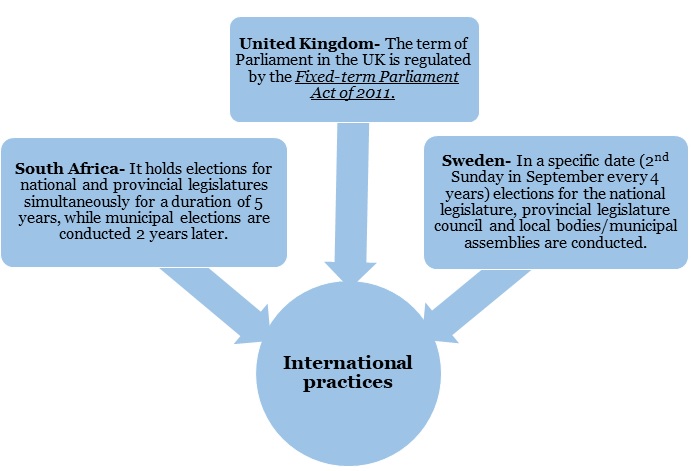7667766266
enquiry@shankarias.in
In the recent monsoon session, the Law Ministry has talked about the potential benefits of simultaneous election.
Article 324 constitutes Election Commission which is responsible for conducting polls to the offices of the President and Vice-President of India, Parliament, the state assemblies and the legislative councils.
|
Key Recommendations of Law Commission Report 2018 |
|
A NITI Aayog paper says that the country has at least one election each year; each state has an election every year.

References